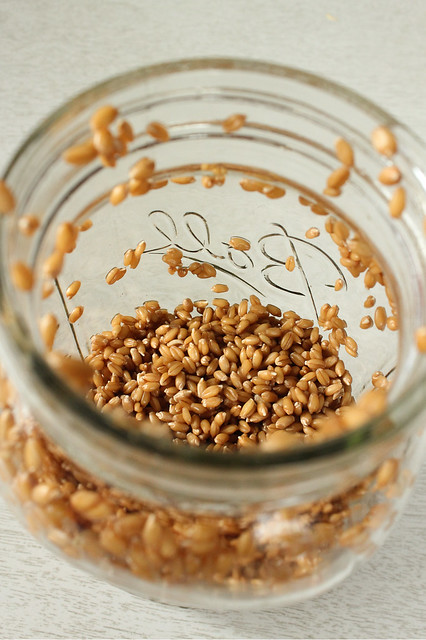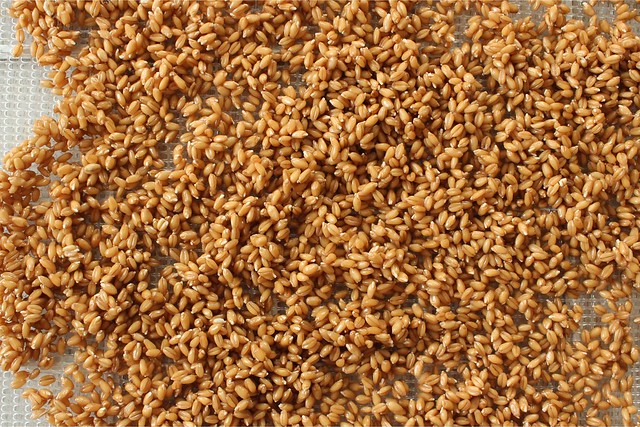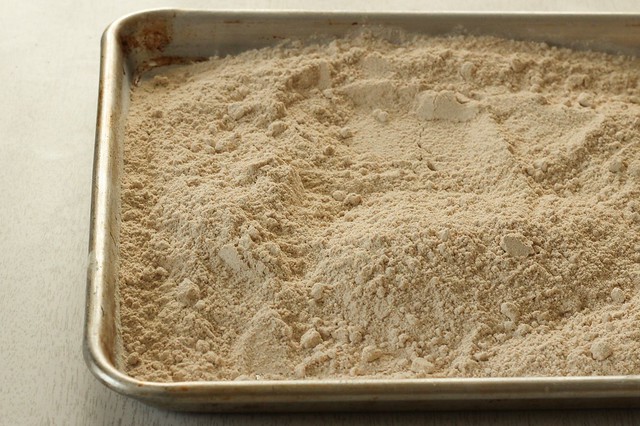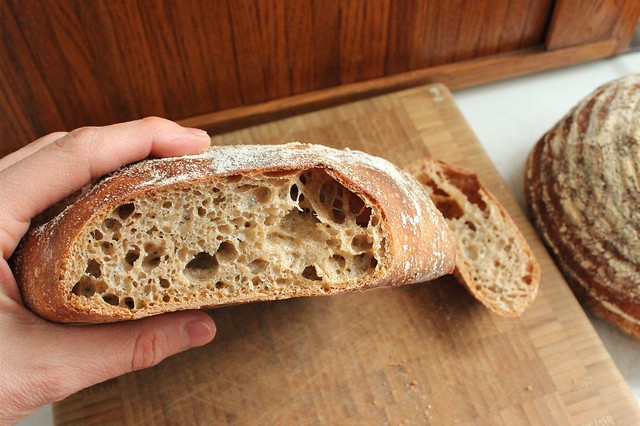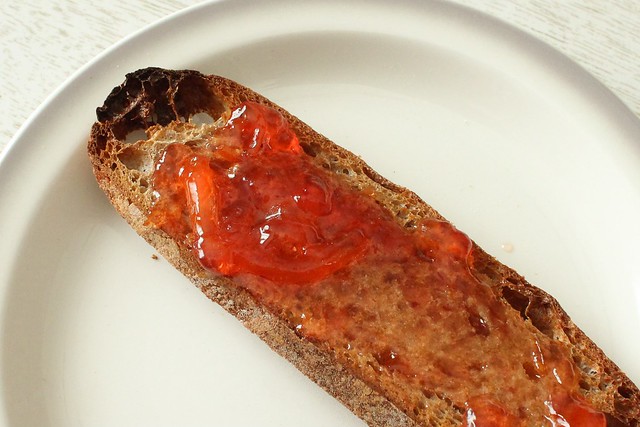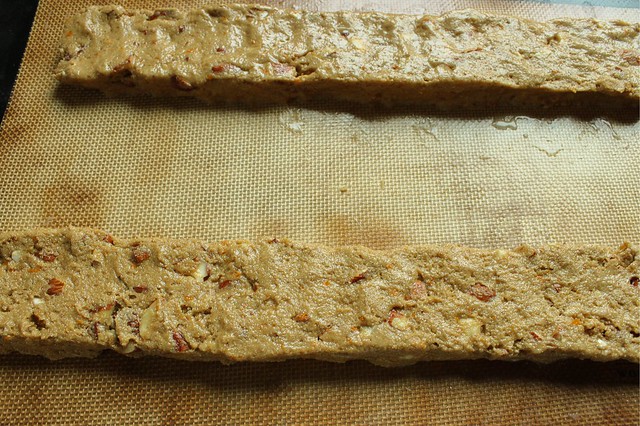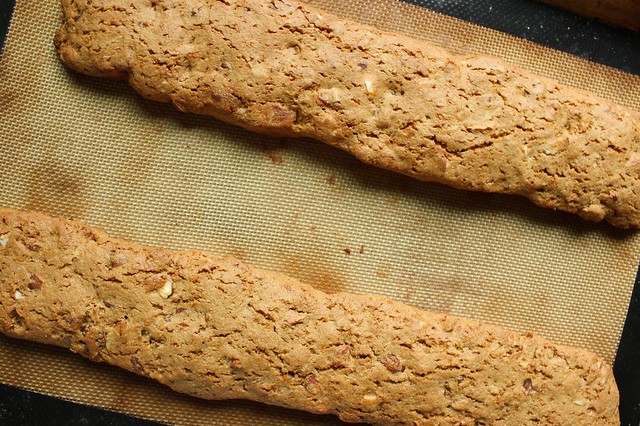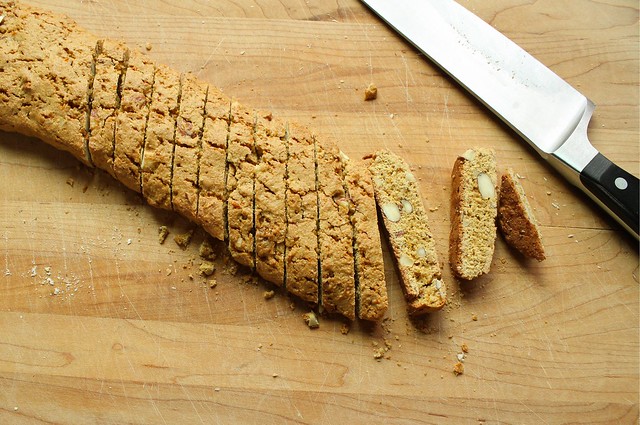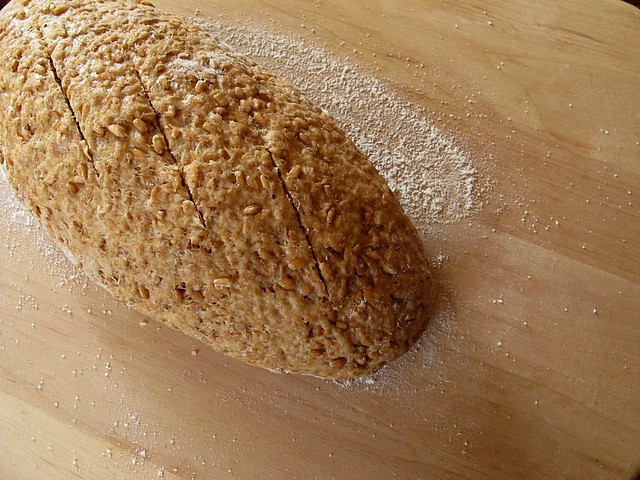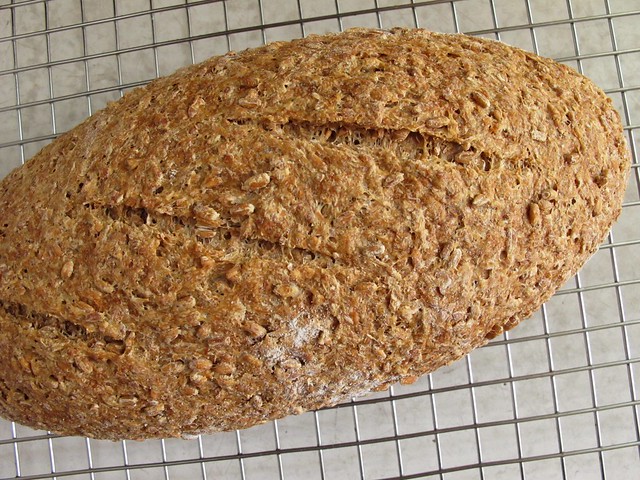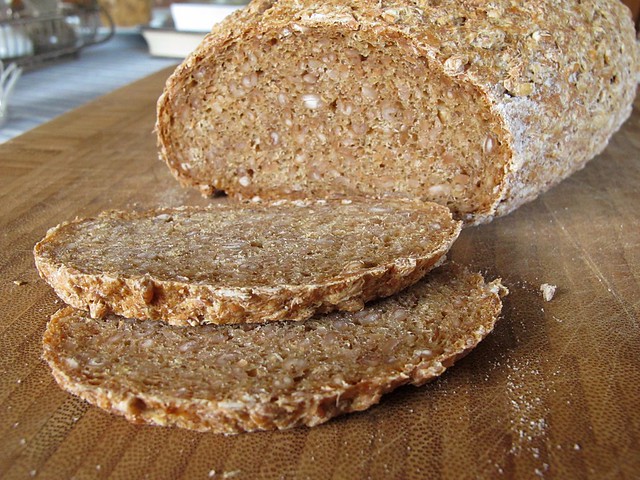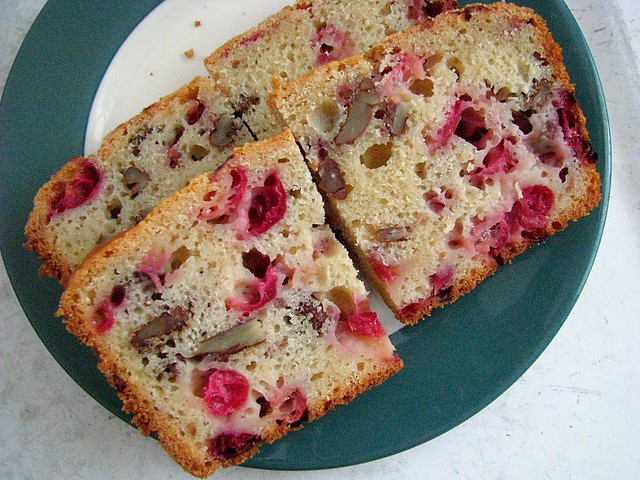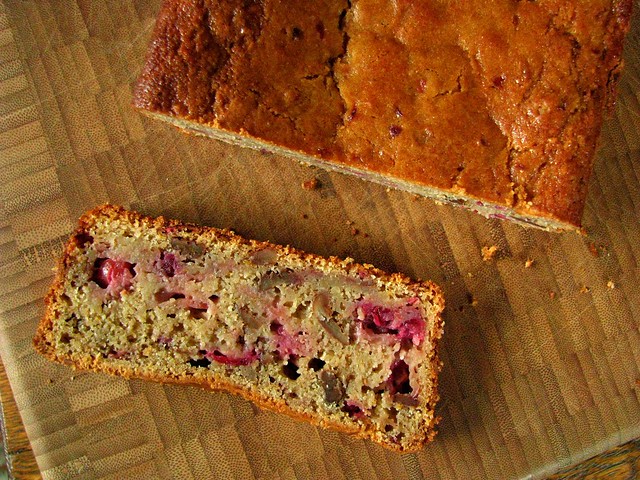I had a moment of shear panic this morning, which happened at the doctor's office. No, nothing is physically wrong with me or my rapidly growing baby... but since I am phobic of all things medically (and pregnancy) related, I found out today that I'm only 6 weeks away from our new family member. For some reason, I thought I had two months left, which is 8 weeks by my count. That's 2 extra weeks of procrastination and preparation, 2 weeks that could add to my sanity of status quo around my house.
What's more, I could be early to deliver (which for some reason, I've convinced myself I will be) - shaving those precious moments of a 3 member household ever more closely. Thinking of things about to change is both exhilarating and petrifying. What if the baby prevents me from breadmaking? What happens if I don't get to sprouting the grains I'd like? After brief moments of self-centered kitchen problems, I realize that I will always make time for the bread, the grains. It's likely the laundry, lawn mowing, and sometime gardening will be the first to suffer. And anyway, as soon as I see that new babe, nothing else will matter - perhaps not even the sourdough.
I also realize that I haven't been as prolific at writing things down as I usually am, and it's not for lack of making and eating. Maybe it's lack of inspiration, and a tinge of laziness that prevents me from getting the camera out of my hand an onto a tripod to steady it. But today in anticipation of a weekend trek to my Parents farm, I had the idea to make sprouted grain biscotti - and the lit-lightbulb-above-head to put it down into words for you.
The biscotti I made my Dad for his birthday in March was a hit, and while the first batch today (traditionally made with slightly less sugar than the Cook's Illustrated Best Recipe version) was in the oven, I figured that I had just enough sprouted wheat berries left in the freezer to try a batch with sprouted flour. While I was at it, I transformed it into a true whole food recipe and replaced the sugar with rapadura: a whole sugar that retains some of its mineral content from the whole sugar cane.
My result was a crispy biscotti that is decidedly unsweet - I might try adding a couple tablespoons of honey to the next batch - but fully enjoyable. It's earthy, and just what you'd expect from a coffee-time treat with decidedly wholesome roots. Increase the rapadura up to 1 cup total if you'd prefer a sweeter confection.
Sprouted Wheat, Sprouted Almond, and Orange Biscotti (adapted from Cook's Illustrated The Best Recipe Cookbook - the one published in 1999)
- 2 c. sprouted wheat flour
- 1 t. baking powder
- 1/4 t. salt
- 4 T. room temperature, unsalted butter
- 1/2 c. rapadura
- 2 large eggs
- 1/2 t. vanilla extract
- 1/4 t. almond extract
- 3/4 c. sprouted almonds, coarsely chopped
- zest from one orange
With oven rack in the center of the oven, preheat the oven to 350. Whisk the flour, baking powder, and salt together.
In a large bowl, cream the butter and rapadura together with a hand mixer for 2 minutes, until light and fluffy. Add the eggs one at a time, and beat for 1 minute after each addition. Add the extracts, the orange zest, and the sprouted almonds and mix to combine. Sprinkle the sprouted flour mixture over the top and stir well by hand until just combined. (Dough will be a little sticky.)
On a silicone mat (or parchment) lined baking sheet, divide the dough into 2 equal portions. Using dampened hands, stretch and pat each portion into a log about 2 inches wide and 13 inches long. The tops should be flattened.
Bake for about 30 minutes until golden brown, and the tops have small cracks in them. Remove from the oven and let cool on the pan for 10 minutes. Reduce the oven heat to 325.
After 10 minutes, slice each log on a diagonal into 3/8 inch slices. Place on a baking sheet and bake for about 15 minutes longer (flipping them over halfway through the baking time) until the biscotti is crisp and lightly brown. Cool completely, and store in an airtight glass container.
The texture of sprouted wheat biscotti is a bit more tender; it has less of the biscotti trademark of tooth-breaking snap, the one only tamed by dunking it into a hot cup of coffee. It has a more gentle and polite bite. I've laid off the coffee, especially in the afternoon, but I'd suspect it would crumble to the bottom of a cup to be happily rescued by a spoon. Citrus and coffee are such happy complements in my opinion.
So, I spent most of the day in the company of biscotti. And very shortly, I recognize that I might not have hours to spend this way, in my own way. I enjoy my own company and that of the baked goods. I enjoy the calisthenics happening so frequently now in my belly, and more than anything, I enjoy thinking about just who this new person will be - a bread obsessed toddler who will happily share my tartine lunches of beets and avocado and tomato? A mere 6 weeks until I can begin to know, and begin that new chapter that I thought was so far away.

